Cassandra Barney
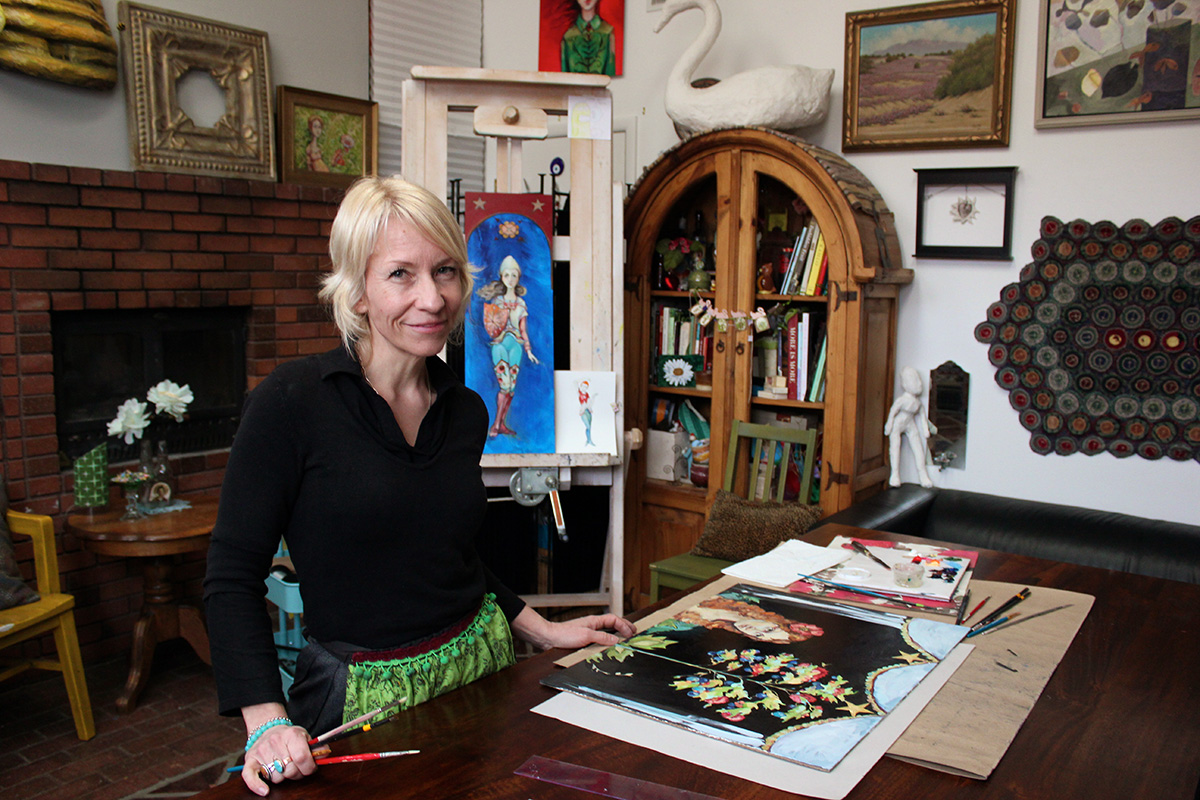
How did you get into painting?
I am a lucky girl. I have a family, a home, and a garden. I have ample opportunities to serve in many capacities, from church to my city’s art council. I get to speak, teach, share, direct, and sometimes beautify.
I do have one complaint about my life. It’s a constant, slightly painful sensation, deep inside, that never goes away. It’s the urge to paint. I have sketchbooks full of ideas that I want to explore, and paintings I look at that spark another idea I yearn to paint. I’m very fortunate to have been given so much. I am especially grateful for my family, but I always wish I had more time to paint.
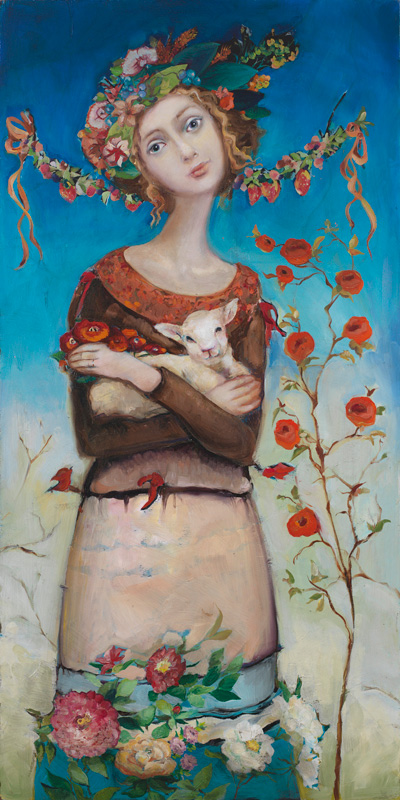
Creativity was not lacking in my childhood activities and play. I think I always had a quiet project going on in my bedroom, like making houses for pet rocks, or creating miniature scenes out of oil-based clay. In the field outside my home I built forts and did experiments with plants. I didn’t, however, really paint or even think about having a career as an artist until college. I have enjoyed practicing many different art forms, but painting is what I love the most. I get so excited about painting that even while writing about it, my pulse rises. I often wake up in the night processing ideas and solutions for paintings.
There is a lot to love about painting. I love mixing the colors. I get so excited about colors that I hear myself make giddy noises when I’m alone in the studio. When I am painting, I process ideas, and through that internal conversation, I gain understanding. I’m also drawn to the challenge of painting—I want each painting to become better than the last, more harmonious, more meaningful, and more beautiful.
Growing up with an artist as a father surely had to be my biggest influence. My dad’s love for painting was obvious. His studio was a place of excitement and mystery. My studio isn’t as mysterious, but it is pretty exciting.
My husband, Dan Barney, is also an artist and an influence. He is a beautiful person. Dan is very supportive and makes sacrifices that encourage me to paint. He figured out years ago that when I have even a little bit of time to work in the studio, I’m happier and more productive in all aspects of life. The same is true for him. We are continually adjusting and trying to find ways to support each other. I imagine that our golden years are going to be a blast. I can imagine us turning the whole house into a studio and telling everyone we are on vacation, but really we are just going to be hiding in our house making art.
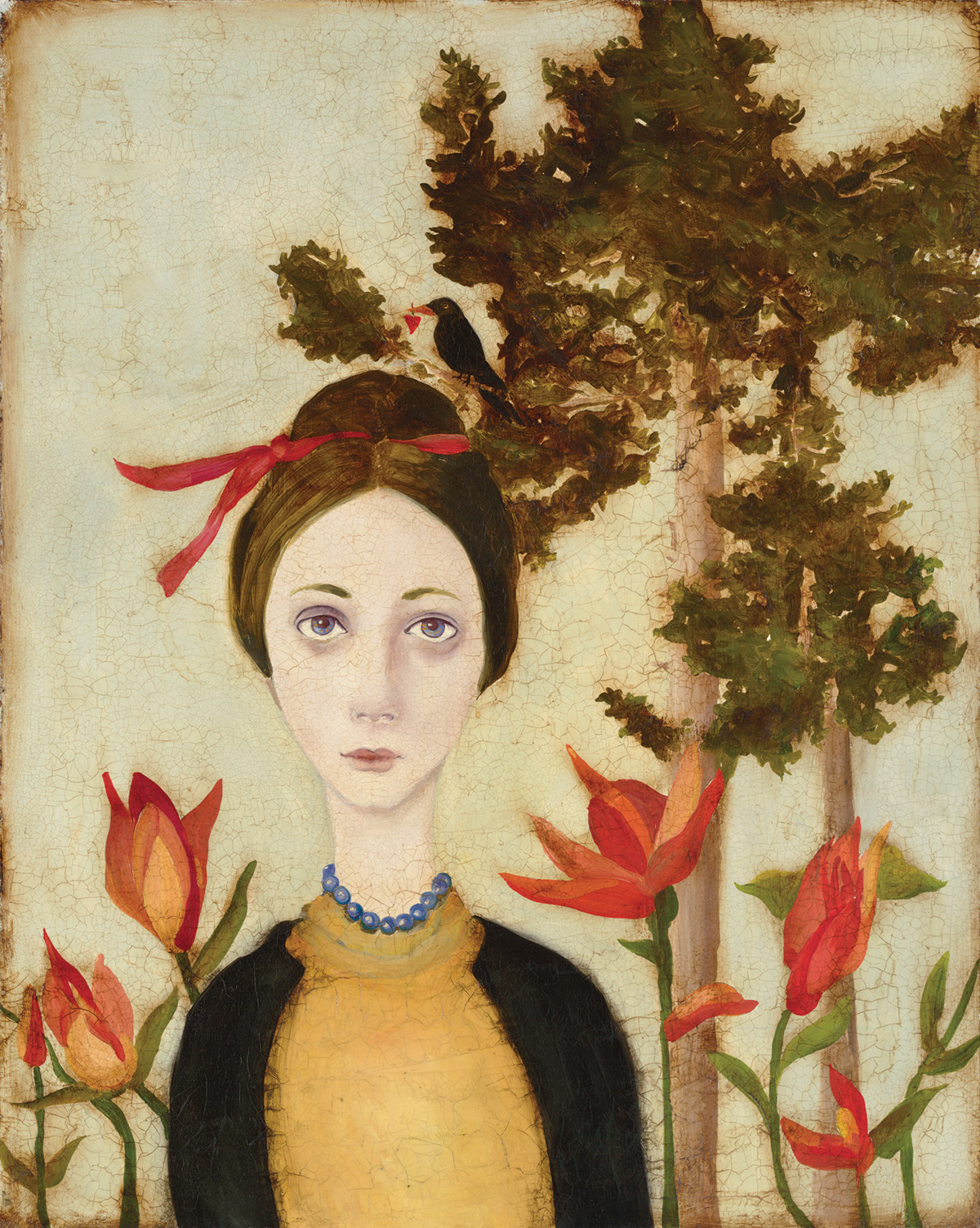

With your retablos series, you invited your blog readers to submit stories which you then painted. What inspired that series? What strengths have you found in that kind of collaboration?
Years ago I had a personal dilemma. I worried that my paintings were too self-indulgent, too cathartic. I wanted to connect with something beyond myself. After looking at some images of ex-votos, I decided to propose a collaboration with my blog readers. I asked them to share their personal narratives with me. I then painted a series of little tin artworks about the gratitudes, miracles, protections, and prayers encountered within these stories. As I worked on these paintings, it didn’t seem that I was simply illustrating the ideas of others, but I was sharing, exchanging with them. A felt the sweet sadness of wanting to hold and smell my newborn babies one more time. I felt the triumph of turning my own tragedies into victories and I felt fear at the fragility of my own mortal body. I came to realize that as individuals we are all unique, and we are also very much the same. I also learned to be at peace with my work that I originally felt was too cathartic, because I began to realize many of our individual stories overlap and what I thought was unique to me was really quite universal.
I am beginning a new series of ex-votos for which I am now accepting stories until mid-March, for a show this fall at the Eccles Community Art Center in Ogden. Anyone interested in sharing a story, be sure to check my blog for details.
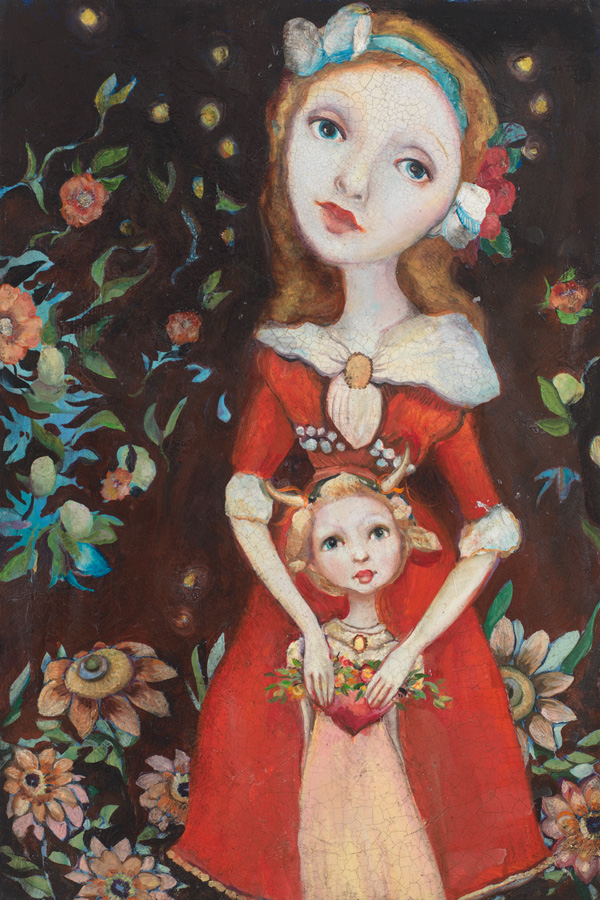
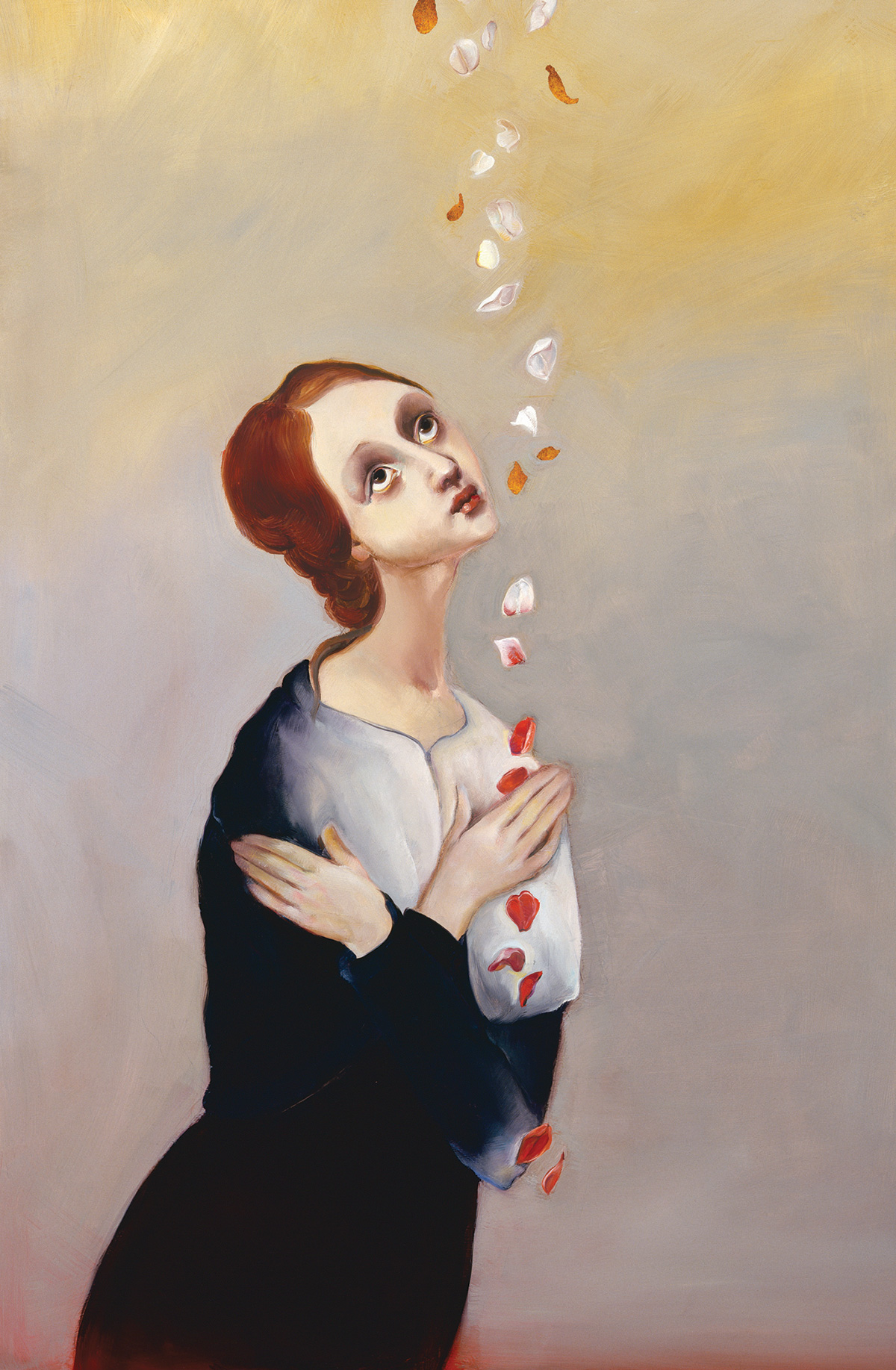
How does the gospel influence your art?
I’m a Mormon and I’m a painter, but I don’t think I’m considered a stereotypical Mormon painter who primarily paints Mormon subject matter. However, I’m actually painting a tree of life painting right now. I also consider my paintings “testimonies,” or personal witnesses. Looking back through my portfolio of work, I can see my understanding of the gospel evolve in my paintings.
When I have an opportunity to share my artwork out in the world, people often tell me there is something spiritual about my paintings. Conversations with these people are almost always followed by them sharing their beliefs with me and me with them. Art can communicate ideas and emotions that can’t be put into words. Art has something to offer that is unique.
Atonement is one of my favorite paintings I’ve ever done. It illustrates how the gospel has influenced my art. I was listening to a talk in church about atonement. It’s something I’ve heard about my entire life but never really tried to understand. As used in the scriptures, “to atone” is to suffer the penalty for sins, thereby removing the effects of sin from the repentant sinner and allowing him or her to be reconciled to God. Jesus Christ was the only one capable of carrying out the atonement for all mankind and did so. I had a moment of clarity, and while I thought, I drew in my sketchbook. I created a sketch of pure white petals falling from the sky like a gift. The petals are mallow, which is a symbol of gentleness. As they touched the figure they took away her impurities, leaving her clean and perfect. The red petals symbolize the blood that Christ spilt for us … and all the figure had to do was look up and accept the gift.
When I look at that painting, there is more there than just an illustration of an idea—I feel something resonate with my spirit. Through painting I was given a gift of understanding and I get to share it.
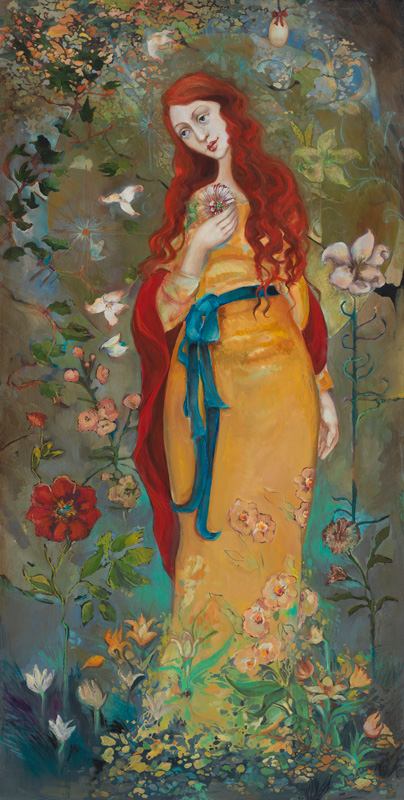
How did your Angels and Witches series come about?
Every fall I’m inclined to paint witches. Witches are fall to me. It’s an indulgence. When the weather changes, I clean the studio, get cozy, make soup, and then I paint witches. I think about witches being women with good intentions, healers and wise women, who are sometimes misunderstood. I’m sure some are rotten to the core, but there have to be some witches who are interested in lightening the hardships of those around them. I also think it’s kind of funny that I am a descendant of Mormon pioneers from one parent’s line and of a line of witches from the other.
After painting witches in fall, I usually paint something about angels. It must be an unconscious balance thing. I have sketches of different ideas about how to portray angelic interaction, comfort, and guidance. It’s a subject I really want to paint more about.
I know I am not always going to have the opportunity to be the protector of my children. When I have felt that unsettled feeling of lurking danger, I have prayed that angels would protect them, and that my children would be listening if warnings were given.
On your blog you mentioned Elder Scott’s April 2012 conference talk where he quoted Joseph F. Smith saying, “I believe we move and have our being in the presence of heavenly messengers and of heavenly beings.” What have you learned from painting angels?
I have had some interesting personal experiences that cannot easily be explained. I recently met Elder Scott and I’m pretty sure he has more than a few heavenly beings around him.
In quiet moments of painting, I have wondered about angels among us. In awe, I feel an awareness of what I am painting and how I am using my time, both in and out of the studio. I do feel gratitude for silent, gentle guidance. Additionally, I am intrigued and want to know more.

For you, how does art (both viewing it and creating it) help make for stronger families?
Art for us at our house is a lifestyle. All of my daughters have continually been engaged in art making throughout their lives. This past year, a friend of mine, Steve Olpin, contacted me about doing a short film about my daughter Fiona and her artwork. It’s called Everything is Art Mom, which she had said during filming and which pretty much sums it all up for her. As I held the fuzzy microphone, because I was the sound maven, my heart was so swelled up I thought it might burst. I’m just one of many artists in this household, not the most special. My youngest, Talulla, has more art supplies than any kid I know and needs personal art-making time as much as I do. Even though they have made some amazing artworks and developed skills, it is even more important to me that art has become a significant way for them to engage with the world.
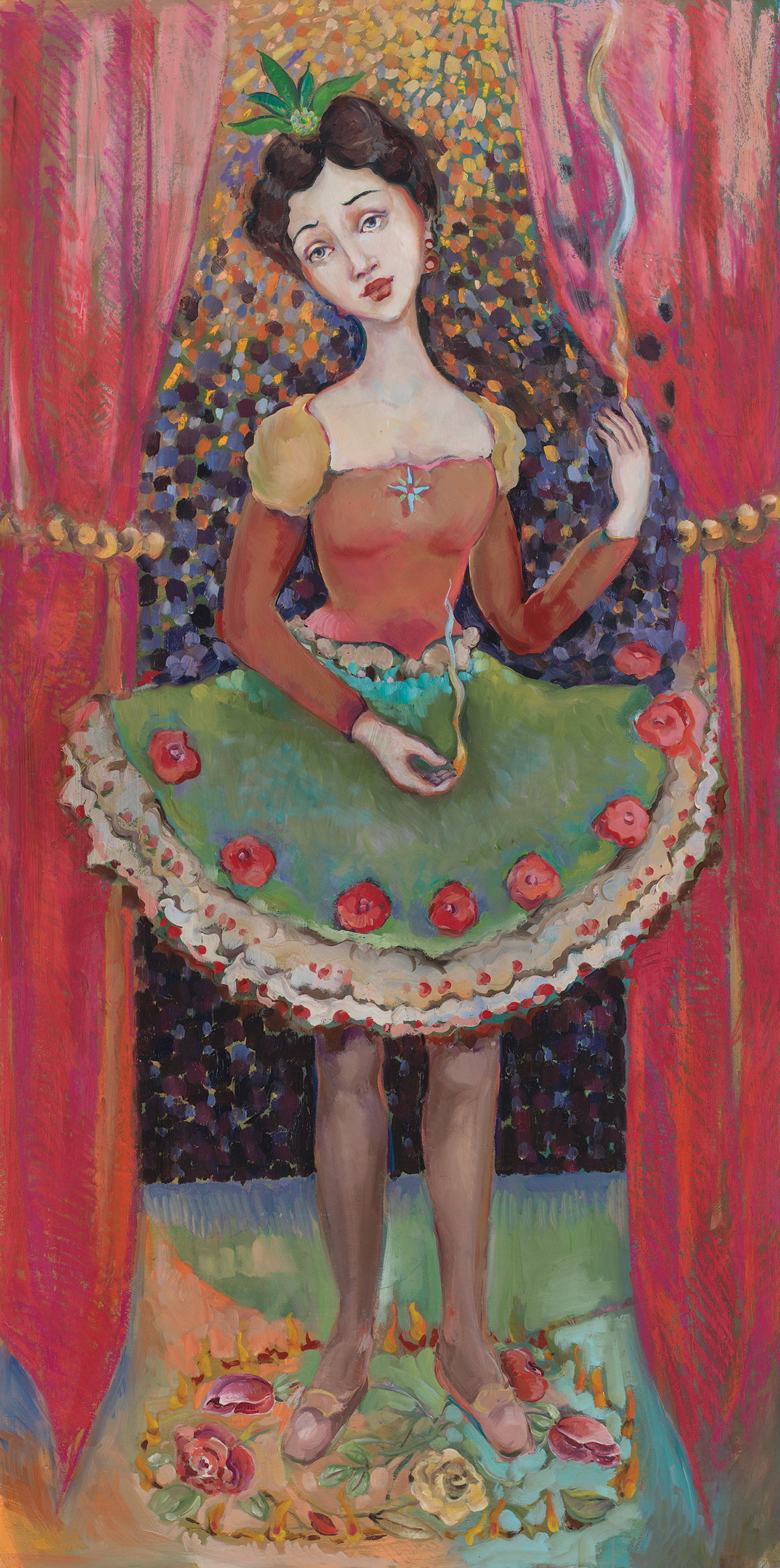
For the Barneys, art is not separate from everything else. Art is a part of school, it’s a part of church, it’s what we do at home to work and play. Art is how we learn and how we communicate. It’s what we do. It’s a way of life. Through art we celebrate, we find beauty, and we make meaning. There is a story in my family that has become legend. My eldest daughter, Sunshine, after visiting a friend’s house for a playdate when she was five years old, came home distressed because that house had no studio. She couldn’t comprehend it. A house without the heart of a home? Everyone in her world had a studio. She felt sorry for those people and talked about it a lot. She told her grandparents and anyone else who would listen. To her it was like this family didn’t have enough to eat.
Some of the happiest moments in my life have been art-making with my family, working side by side on various things. It is our play and it is productive play.
I think we all need art in our lives. We need music and dance so that we can learn and feel more. Art can be pretty powerful. It can transform people and communities. Through art and by sharing our stories we can understand each other better and become closer.
What are you currently working on?
I’m currently on ex-votos. And a painting of the tree of life and the tree of knowledge. I’m also painting warrior moms—sort of Joan of Arc. ❧
